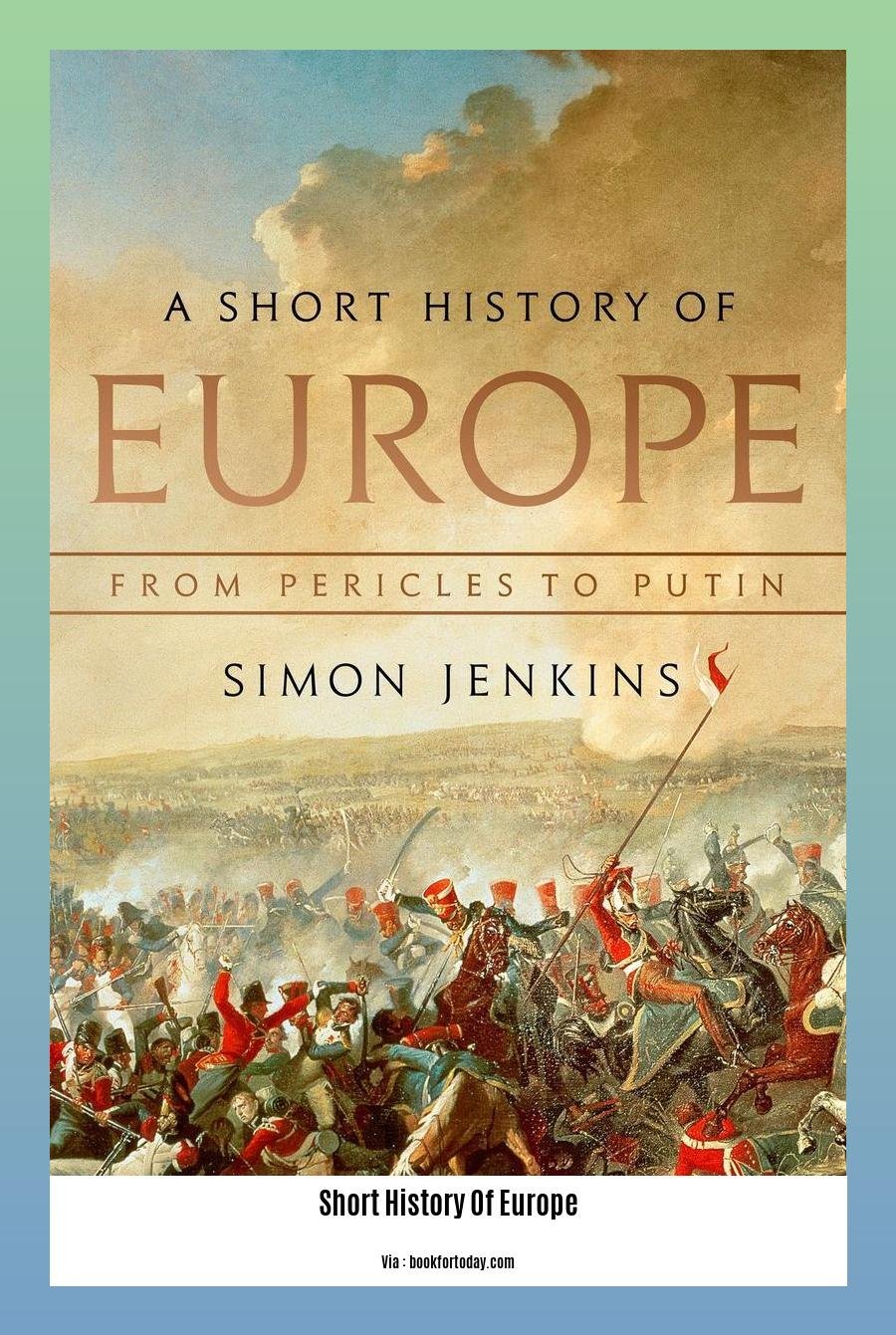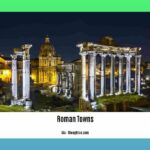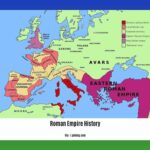Delve into the captivating journey of European history in ‘A Concise Overview of European History: A Short History of Europe.’ From the grandeur of ancient civilizations to the complexities of modern nation-states, this article unveils the rich tapestry of Europe’s past, offering a glimpse into the events, people, and ideas that have shaped this dynamic region.
Key Takeaways:
- Europe is a continent comprising 49 sovereign states in the westernmost part of Eurasia.
- The historical narrative of Europe begins with the advent of anatomically modern humans and extends through various epochs, including the Stone Age, the Roman Empire, the Middle Ages, the Renaissance, and the World Wars, up to the present day.
- Europe is widely recognized as the birthplace of Western Civilization and the contemporary notion of the state.
A Short History of Europe
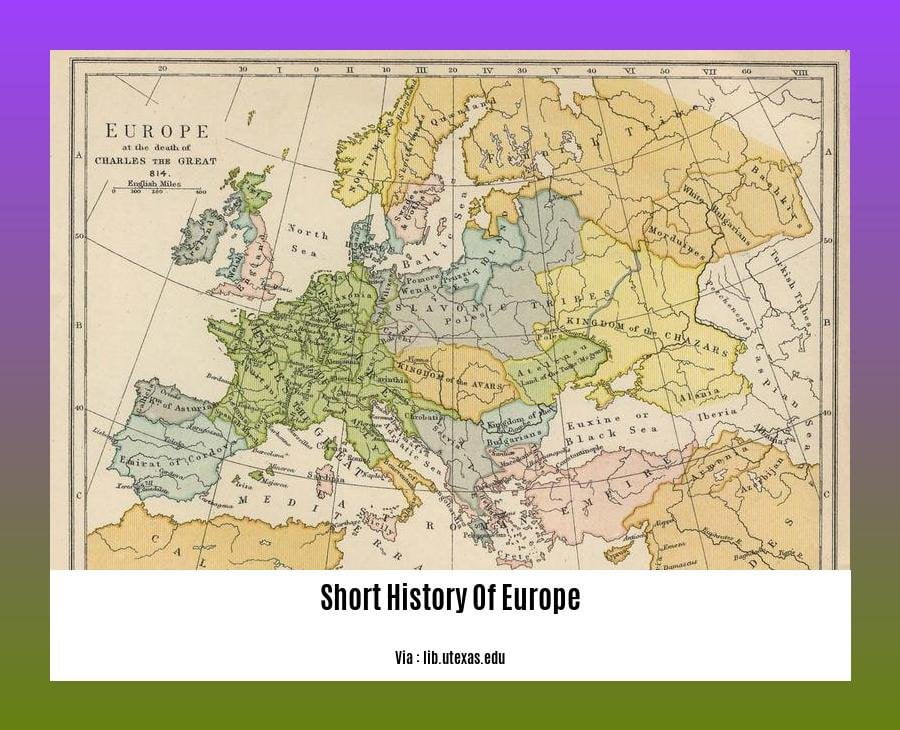
Peek into the rich tapestry of Europe’s past, a continent whose history is as captivating as its diverse landscapes. Join us on a journey through the ages, exploring the rise and fall of civilizations, the clash of empires, and the birth of modern nations.
Ancient Civilizations: Laying the Foundation
Europe’s story begins with the arrival of anatomically modern humans, who left their mark on the continent through cave paintings and stone tools. The ancient Greeks and Romans emerged as prominent civilizations, shaping European culture, philosophy, and government. The Roman Empire, with its vast reach and enduring legacy, laid the foundation for the development of European identity.
The Middle Ages: A Time of Faith and Conflict
The fall of the Roman Empire ushered in the Middle Ages, a period marked by feudalism, the rise of Christianity, and the Crusades. The Catholic Church played a pivotal role in shaping society, while conflicts like the Hundred Years’ War reshaped the political landscape. The Black Death, a devastating plague, decimated Europe’s population, leaving an indelible mark on the continent’s history.
The Renaissance: A Rebirth of Learning and Art
The Renaissance, a period of cultural and intellectual revival, dawned in the 14th century. Art, literature, and science flourished as Europe rediscovered its classical heritage. The rise of humanism emphasized the individual, leading to new ways of thinking and questioning the world. The Protestant Reformation challenged the authority of the Catholic Church, resulting in religious wars and the formation of new denominations.
The Age of Exploration: Expanding Horizons
The Age of Exploration, fueled by a thirst for adventure and wealth, saw European powers venturing into uncharted territories. The discovery of the Americas, the circumnavigation of the globe, and the establishment of colonial empires transformed the world map and laid the groundwork for global trade and interaction.
The Industrial Revolution: A New Era of Innovation
The Industrial Revolution, which began in the 18th century, brought about profound changes to European society. Technological advancements, such as the steam engine, mechanized production, and the development of factories, transformed economies and led to urbanization. The Industrial Revolution also fueled colonialism and the exploitation of resources from around the world.
World Wars and Beyond: Shaping Modern Europe
The 20th century witnessed two world wars that reshaped Europe’s political and social landscape. The devastation of the wars led to the formation of international organizations like the United Nations, aimed at preventing future conflicts. The Cold War, a period of ideological struggle between the Soviet Union and the United States, divided Europe into two blocs. After the fall of the Berlin Wall in 1989, the continent embarked on a path of integration, leading to the formation of the European Union.
Europe’s history is a rich tapestry woven with diverse cultures, empires, and ideas. From ancient civilizations to modern nation-states, the continent has played a pivotal role in shaping the world we live in today. Delving into Europe’s past offers us a deeper understanding of our present. embracing our shared heritage.
Dive into the captivating history of old coins and uncover the secrets they hold. old coins history
History students, embark on a journey of discovery with our comprehensive list of project topics. project topics for history students
Delve into the rich history of England with Simon Jenkins’ insightful exploration. short history of england simon jenkins
Middle Ages and Feudalism
Have you ever heard of a world where kings ruled with divine mandates and knights fought for their cause? Wander with me as we explore the Middle Ages in Europe!
During this era, from around 500 to the 15th century, Europe’s political and social landscape changed dramatically. Feudalism, a system of power and social organization, intertwined the lives of peasants, knights, and nobles.
Key Takeaways:
- The Middle Ages is the historical era between the fall of the Roman Empire and the Renaissance, from 500 to 1400–1500 CE.
- Feudalism was a widespread socio-economic system in Europe during the early Middle Ages, structuring society around land distribution and loyalty.
- Kings reigned with the belief of a divine mandate, creating a social order with the Church playing a prominent role.
- The Catholic Church held significant power, influencing politics, education, and society’s moral fabric.
- The Hundred Years’ War, a series of conflicts between England and France for control of land and power, reshaped Europe’s political map.
- The Black Death, a devastating plague, caused widespread suffering and reduced Europe’s population by an estimated 30–60%.
Feudalism: The Tapestry of Medieval Society
Feudalism was a complex web of obligations and relationships. Let’s visualize a pyramid:
At the apex, we have the king, the pinnacle of authority, often believed to rule by a higher power.
Below the king, lords and ladies held vast estates, granting land to lesser vassals in exchange for military service and loyalty.
The knights, skilled warriors, occupied the next layer, serving as both protectors and fierce fighters.
At the base of the pyramid resided the peasants, the backbone of the economy, who tilled the land, providing food for the entire social structure.
This intricate system of feudalism shaped the medieval landscape, fostering a sense of hierarchy and interdependence.
The Enduring Legacy of the Middle Ages
The Middle Ages was a transformative era that shaped the foundation of modern Europe:
- Political Evolution: The rise of nation-states and monarchies during the Late Middle Ages laid the groundwork for modern political systems.
- Intellectual Progress: The establishment of universities and the translation of classical texts sparked a thirst for knowledge and learning.
- Artistic and Architectural Masterpieces: Gothic cathedrals, with their soaring spires and intricate stained-glass windows, became symbols of religious devotion and architectural prowess.
- Cultural Exchange: The Crusades and trade routes facilitated cultural exchange between Europe and the Middle East, influencing art, science, and literature.
Beyond the Middle Ages: The Dawn of Change
As we step out of the Middle Ages and into the Renaissance, we witness a shift towards humanism, individualism, and the questioning of traditional authority. This marked the beginning of a new era, where Europe would embark on a journey of exploration, scientific revolution, and global transformation.
Sources:
History of Europe – Medieval, Feudalism, Crusades
Feudalism
Renaissance and Reformation
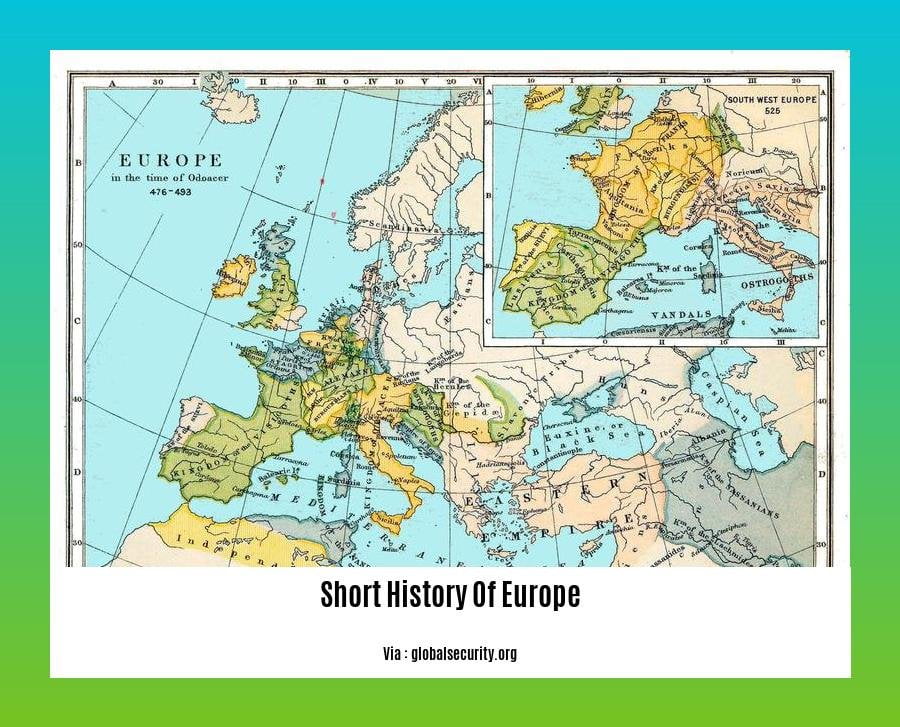
Key Takeaways:
The Renaissance was a cultural and intellectual movement that began in Italy in the 14th century and spread throughout Europe. It was characterized by a renewed interest in classical learning, humanism, and individualism.
The Reformation was a religious movement that began in Germany in the 16th century and led to the split of the Catholic Church into multiple Protestant denominations. It was characterized by a focus on the Bible as the sole source of religious authority and the belief in salvation through faith alone.
Both the Renaissance and the Reformation had a profound impact on European history. They led to a new way of thinking about the world and to the rise of individualism and religious toleration. They also laid the foundation for the modern world.
The Renaissance and Reformation were two of the most important periods in European history. They were times of great change and upheaval, but they also led to new ways of thinking and new ways of life. Without the Renaissance and the Reformation, the world would be a very different place today.
The Renaissance
The Renaissance began in Italy in the 14th century and spread throughout Europe by the 16th century. It was a time of renewed interest in classical learning, humanism, and individualism.
Classical Learning: Renaissance scholars rediscovered the works of ancient Greek and Roman philosophers, artists, and scientists. This led to a new appreciation for the classical world and a renewed interest in learning.
Humanism: Renaissance humanists believed that humans were capable of great things and that they should be free to pursue their own interests and talents. This led to a new emphasis on the individual and a new focus on education.
Individualism: Renaissance individualism led to a new way of thinking about the self. People began to see themselves as unique individuals with their own thoughts and feelings. This led to a new emphasis on personal expression and a new interest in the exploration of the world.
The Reformation
The Reformation began in Germany in the 16th century and spread throughout Europe by the 17th century. It was a religious movement that led to the split of the Catholic Church into multiple Protestant denominations.
Martin Luther: The Reformation was sparked by Martin Luther, a German monk who challenged the authority of the Catholic Church. Luther believed that salvation could only be achieved through faith in Jesus Christ and that the Bible was the sole source of religious authority.
Protestant Reformation: Luther’s ideas led to the Protestant Reformation, which resulted in the split of the Catholic Church into multiple Protestant denominations. Protestantism spread rapidly throughout Europe, and by the end of the 16th century, it was the dominant religion in many parts of Europe.
Religious Wars: The Reformation led to a series of religious wars in Europe. The most devastating of these wars was the Thirty Years’ War (1618-1648), which killed millions of people and devastated much of Europe.
The Legacy of the Renaissance and Reformation
The Renaissance and the Reformation had a profound impact on European history. They led to a new way of thinking about the world and to the rise of individualism and religious toleration. They also laid the foundation for the modern world.
New Way of Thinking: The Renaissance and the Reformation led to a new way of thinking about the world. People began to question traditional authority and to think for themselves. This led to a new emphasis on reason and a new interest in the exploration of the world.
Rise of Individualism: The Renaissance and the Reformation led to the rise of individualism. People began to see themselves as unique individuals with their own thoughts and feelings. This led to a new emphasis on personal expression and a new interest in the exploration of the world.
Religious Toleration: The Renaissance and the Reformation led to the rise of religious toleration. People began to realize that there was more than one way to worship God. This led to a new emphasis on religious freedom and a new willingness to accept people of different faiths.
Citations:
- The Renaissance and Reformation
- The Protestant Reformation
Modern Europe
Key Takeaways:
The term “Modern Europe” generally refers to the period in European history from the late 18th century to the present day.
The Industrial Revolution, which began in Britain in the late 18th century, was a major turning point in European history. It ushered in an era of unprecedented technological change, economic growth, and urbanization.
The late 19th and early 20th centuries also saw the rise of nationalism, imperialism, and militarism across Europe, eventually leading to the outbreak of the First World War and later, the Second World War.
The aftermath of World War II marked the beginning of a new era in the history of modern Europe. The devastation of the war and the rise of the United States and the Soviet Union as global superpowers led to a new political order in Europe.
The process of European integration characterized much of the second half of the 20th century. It culminated in the formation of the European Union (EU) in 1993, which today comprises 27 member states and is a major economic and political power on the world stage.
Modern Europe has also faced unique challenges and opportunities, including global conflict, economic crises, and technological advancements, but through it all, the region has remained a hub of culture, innovation, and diverse communities.
The Industrial Revolution:
The industrial revolution that started in Britain spread, leading to similar upheavals across Europe.
It transformed traditional rural agrarian economies into urban industrial economies.
New technologies, including the steam engine, power loom, and cotton gin, revolutionized production, leading to increased efficiency and productivity.
Factories cropped up, attracting rural workers, leading to the growth of cities and the emergence of the working class.
World Wars and the Aftermath:
The early 20th century witnessed the rise of Nationalism, leading to rivalry and tension among European nations.
World War I broke out in 1914, leaving millions dead and redrawing the map of Europe.
The Treaty of Versailles, which ended World War I, was perceived as harsh by Germany, laying the seeds for World War II.
World War II, even more devastating than its predecessor, concluded in 1945, and its aftermath saw the rise of the Soviet Union as a major player in European affairs.
The Cold War:
The Cold War was an era of ideological, political, and military tension between the Soviet Union and the United States.
It profoundly influenced European politics and society, dividing the continent into two blocs: the Western Bloc and the Eastern Bloc.
The Cold War ended in 1991 with the collapse of the Soviet Union.
European Integration:
The formation of the European Union, a cooperative economic and political union, was prompted by the desire for peace and economic cooperation in post-World War II Europe.
Over time, more countries joined the EU, leading to its current composition of 27 member states.
The EU has brought about free movement of goods, services, capital, and people within the bloc, fostering economic growth and cooperation.
Challenges and Opportunities:
Modern Europe has faced challenges such as the Yugoslav wars of the 1990s, the global financial crisis of 2008, and the recent COVID-19 pandemic.
Despite these challenges, Europe has navigated these crises with resilience and cooperation.
The continent remains a global leader in technology, innovation, and cultural diversity, and it continues to play a vital role in shaping the world we live in.
Sources:
- History of Modern Europe
- Modern Europe: A History
FAQ
Q1: What key factors contributed to the development of European civilization?
A1: The flourishing of European civilization was influenced by various factors, including the contributions of ancient civilizations such as the Greeks and Romans, as well as the amalgamation of cultures brought by barbarian groups during the Middle Ages.
Q2: How did feudalism shape society during the Middle Ages in Europe?
A2: Feudalism, a defining characteristic of the Middle Ages, established a hierarchical system based on land distribution and administrative control, shaping the social, economic, and political structures of medieval European society.
Q3: What were the major turning points in European history?
A3: Significant turning points in European history include the Industrial Revolution, which brought about transformative changes in technology, society, and economics, and the two World Wars of the 20th century, which had a profound impact on the political and social landscape of Europe.
Q4: What was the significance of the Renaissance and Reformation in European history?
A4: The Renaissance, a period of cultural and intellectual revival, and the Reformation, a religious movement that led to the Protestant split from the Catholic Church, had a profound impact on European society, leading to the questioning of traditional authority and the emergence of new ideas about politics and religion.
Q5: How did the European Union come into existence?
A5: The European Union, a political and economic union of European countries, emerged after World War II as a response to the need for cooperation and integration, aiming to promote peace, stability, and economic prosperity among its member states.
- Sept 31 Myth: Unveiling Calendar Secrets - March 18, 2025
- How Long & Till December 18, 2025: Accurate Countdown Guide - March 18, 2025
- Discover Japanese Artists: A Complete History - March 18, 2025
